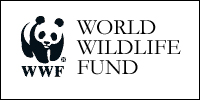Climate change could imperil half of plant and animal species in the world’s most naturally rich areas
Published by the World Wildlife Fund Up to half of plant and animal species in the world’s most naturally rich areas—including the Amazon and the Galápagos—could face extinction by the turn of the century due to climate change if carbon emissions continue to rise unchecked. A new study examines various climate change scenarios—from 4.5°C rise in […]



















